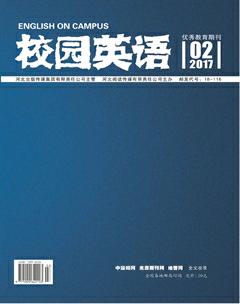The Stylistic Analysis of The Sound of the Sea
【Abstract】Stylistic study of poems is indispensible during the reading process. The essay argues that the analysis of the poem The Sound of the Sea written by Longfellow on the phonological and syntactic dimension effectively contributes to the understanding of the theme.
【Key words】The Sound of the Sea; phonological analysis; syntactic analysis
Linguistic description plays a crucial role in understanding a literary text. In the poem The Sound of the Sea written by Longfellow, the analysis on the phonological and syntactic dimension effectively contribute to critical interpretation. Thus the theme of inspiration from the Divinity is revealed to readers. There are mainly four points which can be applied in the process of understanding the poem.
Phonologically, the use of euphony and cacophony as well as different vowels and consonants conveys the sounds of the sea accurately, which can be experienced by readers when they read the poem. Smooth sounds are used to create the pleasant concordance of the sound. Consonants like /s/, /w/, /r/ are used for several times. Such as “sea”, “sleep”, “awoke”, “wide”, “wave”, and “sweep”. Then the harsh and wide sound of the second stanza shows lots of windy and fierce sounds. The word “cataract” is the best example. The pronunciation is harsh and the sound of it is not as pleasant as the sounds in the first stanza. Thus The different sound of the “cataract” answers the “multiplied” in the former line. “Multiplies” is a long word, and /m/, /t/, and /p/ shows the complexity of the sounds.
The change of rhyming scheme indicates the feeling of the speaker grows stronger and what the speaker gains is not only the sound of the sea but also the inspiration from the sounds. The first two stanzas describe the sounds of the sea, while the third and fourth stanza show the response which comes from the speakers mind. Thus a change of rhyming scheme reminds the reader of the change. The rhyming scheme of the first and second stanza is a-b-b-a, while it changes in the third and fourth stanzas into c-d-e, c-d-e.
The structures of sentences also contribute to the development of the poem. The two complete sentences in the beginning give a whole and complete scene where the speaker is in. While the variousness and vastness of the space is showed by phrases and fragmentary sentences in creating the mysterious atmosphere in the second stanza. The inversion in the third stanza pushes the change of the scene from the sound of the sea to the feeling of the speaker. It indicates the growth is happening on the speaker. And the last complex sentence creates a more complex situation. The inspiration gained from the sounds spreads into a larger thinking of the divine power.
The coma is also deliberately used in the third and fourth stanza. When the focus of the poem begins to change, the sublimity is further explained. What arouse the sublimity are not only the sounds, but also the distance between the sea and the speaker. The coma works as the distance between what the speaker hears and what his feeling is. Thus, it not only serves as the separation between sentences, but the distance from the sea and the speaker. What differentiates in the third and fourth stanza is the coma which is inserted into the ninth and twelfth line separately. It breaks the continuity of the sentence. It suggests the flowing of the speakers mind, and leaves space for readers to think about what is going on next.
In conclusion, the phonological and syntactic dimension works together to convey the theme of the poem The Sound of the Sea: the tremendous inspiration of the Divinity. It is more than necessary to read and understand a poem from more stylistic dimensions than only from the art of the language.
References:
[1]Leech,G.N.A linguistic Guide to English Poetry[M].London: Longman,1969.
[2]Verdonk,P.Stylistics[M].上海:上海外語教育出版社,2012.
作者简介:葛翼飞(1990-),女,内蒙古赤峰人,毕业于云南大学英语语言文学系,硕士,现就职于云南机电职业技术学院,教师,研究方向为英语语言文学。

